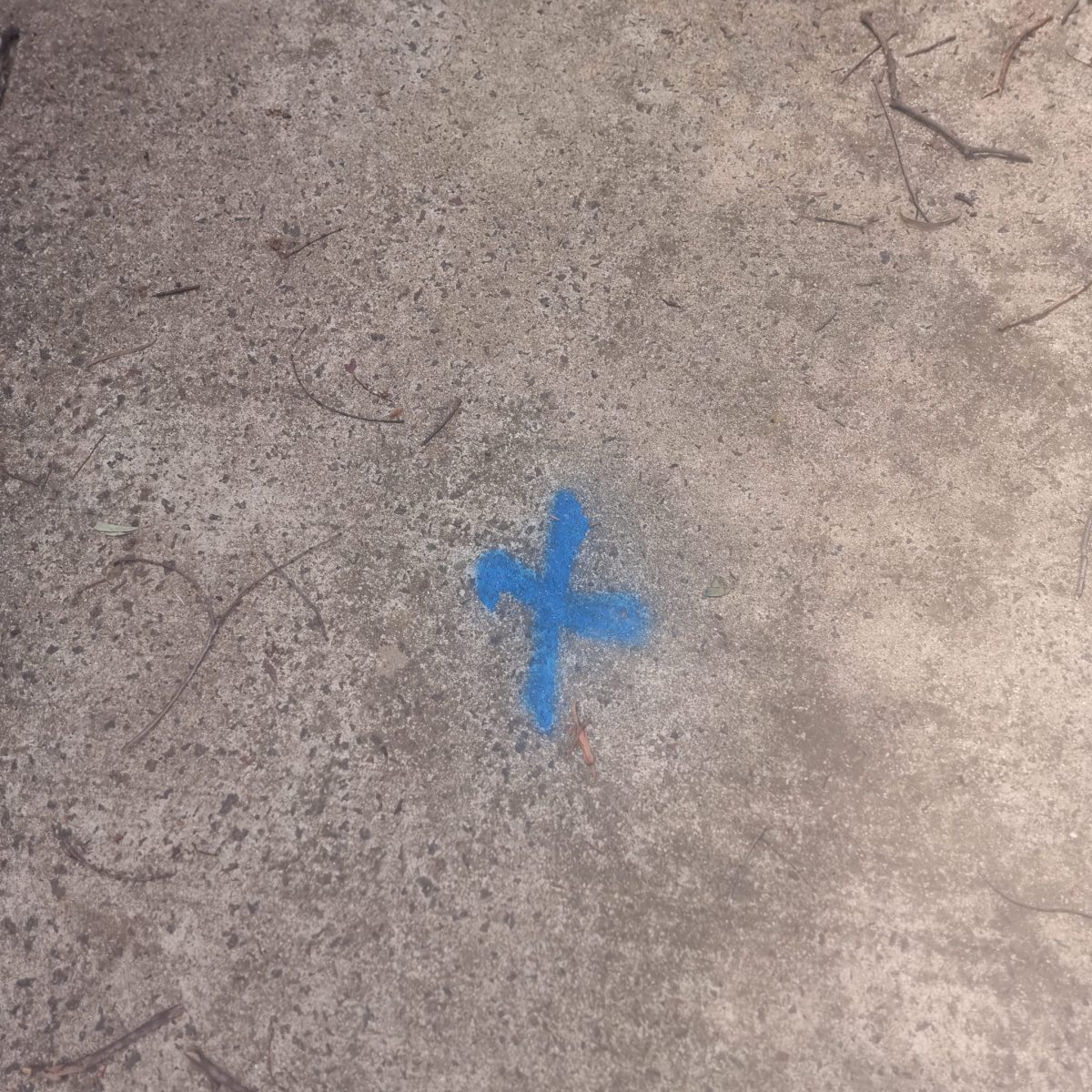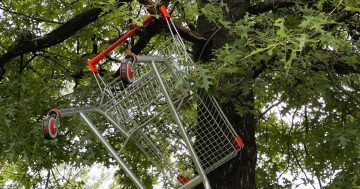
X marks the spot, but what spot? Photo: Canberra Notice Board Group, Facebook.
“I woke up this morning to this on my driveway,” a post to the Canberra Notice Board Group on 12 December read.
The attached photo depicted a clear blue ‘X’ spray painted on the concrete. Some just saw a mark a plumber might make to know where to dig to solve a clogged or leaky pipe or possibly a “Santa landing spot”, but other comments were distinctly darker.
“Looks like someone’s tagged your house, either to steal a dog or to rob it. I’ve definitely heard of this sort of marking for criminals. Stay safe,” one read.
“I know in the past people did this to mark a house with a dog that would be valuable for stealing and using in fighting,” another read.
“Keep any pets inside.”
“Be vigilant.”
Not exactly happy thoughts but, in this case, the spurious ‘X’ turned out to be entirely innocent.
“It was the plumber that came over yesterday,” the poster updated.
“Thank you so much for your help.”
But is there any truth to the legend? Are there gangs of crooks prowling the streets, baiting dogs and marking their territory with chalk or spray paint, biding their time until they can sneak in, steal it and enter it in cruel dog fights in some abandoned Canberra warehouse?
The fact-checking website Snopes has found this idea to have originated in Perth around 2013. It then spread to the UK, where pet owners were coming across chalk marks on their gates or fences around the time of a spike in dog thefts. But police struggled to link the two.
It’s also hard to source concrete data on dog thefts because they’re not tracked as ‘property’ when they’re reported stolen.
Closer to home, ACT Policing is confident “dog-napping or ‘dognapping gangs’ are not a known issue in the ACT”.
“Spraypainted marks here are usually related to works such as plumbing or fixing cracked footpaths, etc,” a spokesperson said.
RSPCA ACT published a media release in July 2014 in the wake of “reports online and on social media of dogs that have been targeted using markings such as chalk near or around houses”.
“The reports have also suggested that these dogs are being targeted for use in hunting or dog fighting rings,” the statement reads.
“At this point in time, there has been no evidence for us to believe that this is actually occurring in the community.”
CEO Michelle Robertson says she saw similar marks on fences growing up in South Africa, where crime is more rampant than in Australia, but no connection was ever made to dog-fighting gang activity.
“It’s never come across our desks.”
It would seem it remains nothing more than an urban legend.
But to help you spot anything untoward on your property, we also asked the ACT Government’s Transport Canberra and City Services (TCCS) directorate about what sort of markings their repair and maintenance crews leave behind.
They adhere to the ‘Australian Standard 5488’, which sets out a nationally accepted guide for marking the likes of roads, verges and footpaths.

Examples of the standard colours used to represent utilities in the ACT. Image: ACT Government.
According to the spokesperson, this “provides a national standard format for recording this information”.
“Having an industry standard helps to reduce confusion and misinterpretation.”
There’s another guide for trees. For instance, “a white marking near the kerb is used to show where a new tree planting will soon be placed” while “a small yellow dot is placed at the base of a tree that is scheduled to be removed”.
“Stumps may be painted pink to indicate the location for removal”, and “small blue dots at the base of a tree or tape around trees may relate to tree audits”.
For all reports of lost or stray animals, contact RSPCA ACT on 02 6287 8100 or Domestic Animals Services on 13 22 81. RSPCA ACT also encourages members of the public to report suspicious activity, including stolen animals, to Crimestoppers on 1800 333 000.
Original Article published by James Coleman on Riotact.






